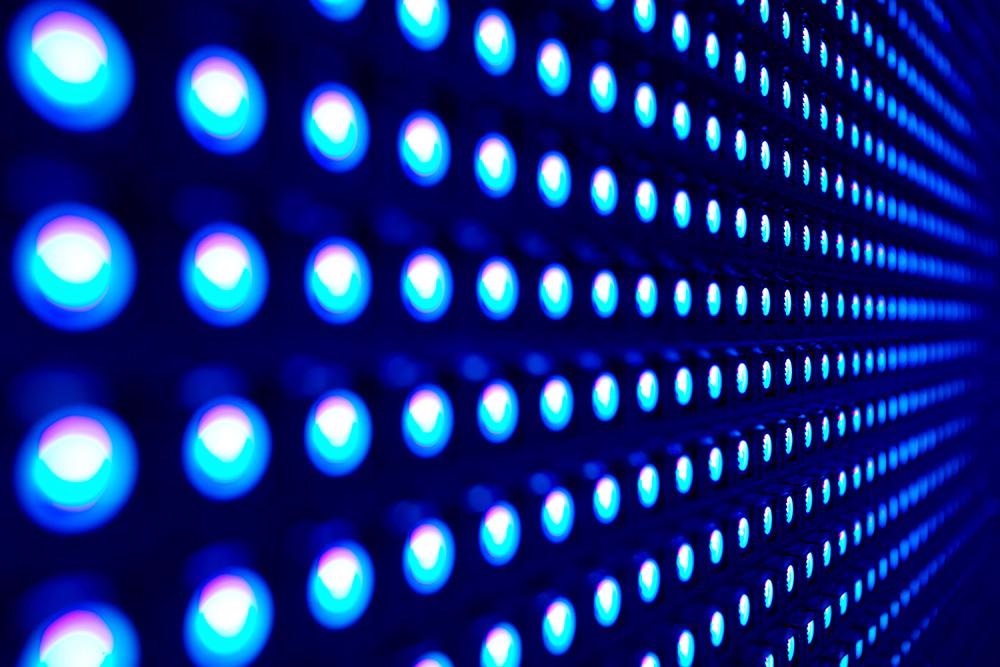A novel technique to fabricate perovskite-based light-emitting diodes using quantum confinement is presented in the study published in the journal ACS Nano.

Study: Strongly Quantum-Confined Perovskite Nanowire Arrays for Color-Tunable Blue-Light-Emitting Diodes. Image Credit: Ng Wei Keong/Shutterstock.com
Perovskite-based Light Emitting Diodes
Light-emitting diodes (LEDs) are an integral part of the electronics industry with applications in various devices such as mobile phones, televisions, and traffic signals. Recently, the demand for efficient LEDs has risen considerably. To meet this ever-increasing demand, new and efficient techniques to fabricate LEDs are being researched. One such technique is perovskite-based LEDs.
Due to their excellent color purity, variable bandgap, and excellent photoluminescence quantum yields, metal halide-based perovskites have recently risen as great potential prospects for perovskite-based LEDs.
The Role Halides Play in Light Emitting Diodes
According to theory, by adjusting the compositions of the halide being used, i.e., iodine, bromine, and chlorine, the color of the emission may be fine-tuned. Nevertheless, color instability caused by migration of ions and separation in blended halides impedes the future development of perovskite-based LEDs, particularly blue perovskite-based LEDs, which require significantly higher voltages for proper operation.
A potential strategy for achieving color controllability in perovskite-based LEDs is to use perovskite-based nanostructures which utilize quantum confinement.
As observed with inorganic PbS/PbSe-based LEDs, quantum confining carriers results in a wider energy bandgap and a shift of the perovskite-based LED emission's hue towards the blue spectrum. Yet, the need to preserve ligands to sustain a confined quantum state reduces the carrier insertion efficacy.
Quantum Confinement of Perovskites
This study used a low-pressure enclosed space sublimation technique to develop a density matrix of highly quantum-confined perovskite nanowires in porous anodic aluminum oxide templates.
The average widths of the perovskite nanowires may be carefully controlled to lower the dimensions of the pore using atomic layer deposition in the anodic aluminum oxide channels. CsPbBr3-based quantum-confined perovskite nanowires of numerous nanoscale widths are produced effectively with varying photoluminescence emission wavelengths, indicating significant quantum confinement.
A thorough investigation of the kinetics of the carriers and density functional theory computations of the interfaces between perovskites and anodic aluminum oxide was conducted to better comprehend the anodic aluminum oxide passivation phenomena and shielding process on quantum-confined perovskite nanowires.
Fabrication for Highest Performance
Quantum-confined perovskite nanowire arrays of varying diameters are made into perovskite-based LEDs, with the electroluminescence emission color shifting from the green spectrum to the blue spectrum. Surprisingly, the cyan hue perovskite-based LEDs achieved 7.1 percent external quantum efficiency, the most to the team's knowledge for completely pure CsPbBr3 cyan blue emission LEDs.
Conversely, the emissions of sky-blue and pure-blue quantum-confined perovskite nanowire LEDs were manufactured successfully to prove the viability of controllable blue emissions. The study presented by the team highlights the enormous potential of quantum-confined perovskite nanowires for reliable full-color perovskite-based LEDs.
Results of the Study
The team utilized an atomic layer deposition coating method to shrink the already small pores of anodic aluminum oxide down to just a few nanometers.
Adding to that, the team established an anodic aluminum oxide template-assisted single-step closed space sublimation growth technique to cultivate CsPbBr3-based quantum-confined perovskite nanowires arrays in the anodic aluminum oxide templates.
The team highlighted that when the width of the nanowire is reduced from 6 nm to just 2.8 nm, the photoluminescence peak shifts considerably from 512 nm to 467 nm, exhibiting a powerful quantum confinement effect.
Mathematical simulations revealed that anodic aluminum oxide sidewalls successfully passivated cation and halide vacancies and LEDs with electroluminescence emission in the cyan, pure blue, and sky-blue spectrums were created in the process.
Using effective charge infusion in the vertically one-dimensional nanostructure, 7.1 percent external quantum efficiency for 492 nm emission was attained for CsPbBr3 cyan-colored perovskite-based LEDs. In comparison, 3.2 percent and 0.9 percent external quantum efficiencies of sky-blue and pure blue perovskite-based LEDs were accomplished.
To conclude the team's research illustrated a novel technique to engineer the sizes and optical characteristics of perovskites. The research also demonstrated the tremendous potential of quantum-confined perovskite nanowires for prospective high-performance yet reliable full-color perovskite-based LEDs.
Reference
Fu, Y., Poddar, S. et al. (2022). Strongly Quantum-Confined Perovskite Nanowire Arrays for Color-Tunable Blue-Light- Emitting Diodes. ACS Nano. Available at: https://pubs.acs.org/doi/10.1021/acsnano.2c02795
Disclaimer: The views expressed here are those of the author expressed in their private capacity and do not necessarily represent the views of AZoM.com Limited T/A AZoNetwork the owner and operator of this website. This disclaimer forms part of the Terms and conditions of use of this website.